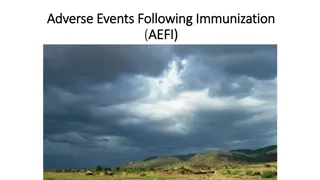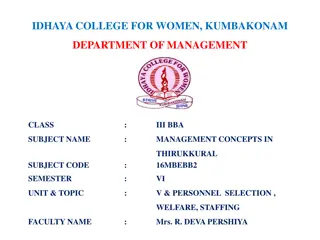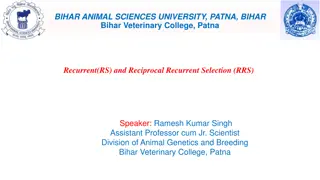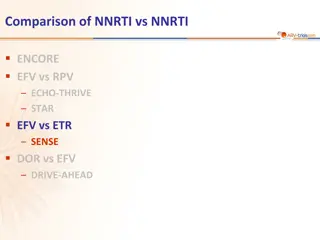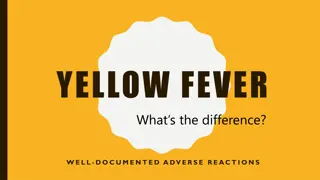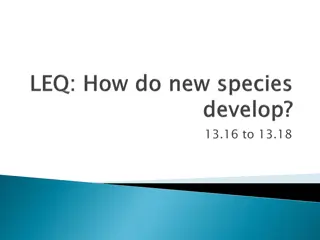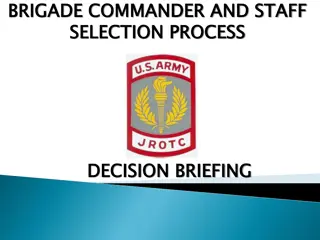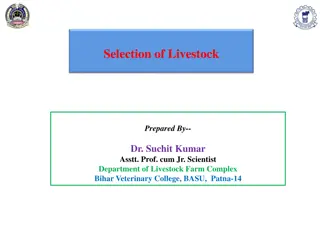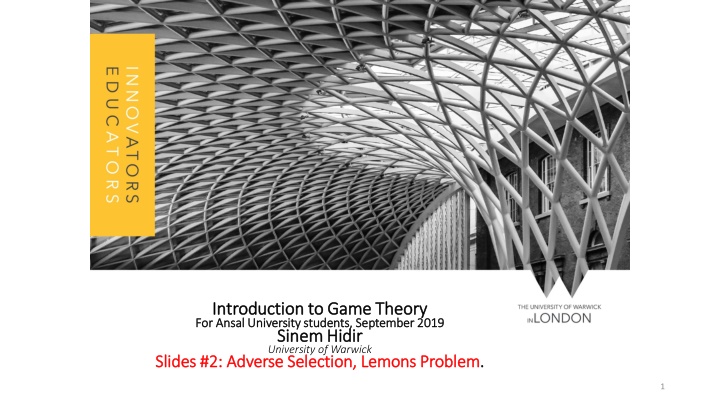
Adverse Selection and Lemons Problem in Economics
Learn about adverse selection and the lemons problem in economics, which refer to situations where information imbalances between buyers and sellers lead to market inefficiencies. Discover how asymmetric information can impact various markets, such as used cars, labor, and insurance, and explore strategies to mitigate these inefficiencies through informational design and contract mechanisms.
Download Presentation

Please find below an Image/Link to download the presentation.
The content on the website is provided AS IS for your information and personal use only. It may not be sold, licensed, or shared on other websites without obtaining consent from the author. If you encounter any issues during the download, it is possible that the publisher has removed the file from their server.
You are allowed to download the files provided on this website for personal or commercial use, subject to the condition that they are used lawfully. All files are the property of their respective owners.
The content on the website is provided AS IS for your information and personal use only. It may not be sold, licensed, or shared on other websites without obtaining consent from the author.
E N D
Presentation Transcript
Introduction to Game Theory Introduction to Game Theory For For Ansal Ansal University students, September 2019 University students, September 2019 Sinem Hidir Sinem Hidir University of Warwick Slides #2: Adverse Selection, Lemons Problem Slides #2: Adverse Selection, Lemons Problem. . 1
Outline: Outline: Introduction to asymmetric information: lemons problem. Adverse selection in used car market, labour and insurance markets. 2
Information Information Economics: Economics: Information economics deals broadly with the presence of asymmetric information in markets, and ways to overcome the inefficiencies caused by these informational frictions through institutions or design of contracts. 3
Some products, i.e. coca cola, are identical everywhere in the world: brand ensures quality. However, in many cases sellers offer a product or service whose quality cannot be easily judged before purchase. Informational distortions are costly: when the buyer doesn t have enough information, he will be hesitant to buy. May mean the markets cannot function properly=> leads to market failure. 4
Lemons problem : used car market Lemons problem : used car market The term was first defined in Akerlof (1970) ``The Market for Lemons , who later won the Nobel prize for his famous work in 2001. 5
A potential buyer of a used car has very little knowledge about the car, and any potential problems. On the other hand, the seller knows a lot about the car! Owners of cars having invisible defects are expected to be more willing to sell. Adverse Selection arises when an informed individual s trading decision depends on privately held information in a way that adversely affects other uninformed market participants. 6
In presence of adverse selection, uninformed traders will be wary of any informed trader who wishes to trade with them, and their willingness to pay for the product will be low. As a result, first-best (efficient) trade cannot be achieved! 7
Used car exercise 1: Used car exercise 1: Half of the cars in the market are lemon (bad) and half are plum (good). For a bad car, we have ??= 1000 , while ??= 1500. (value to seller and buyer) For a good car, we have ??=3000 and ??=4000. Whenever ?? ??, efficiency requires trade to take place as any car is more valuable for the buyer than to the seller! 8
1. Perfect information: 1. Perfect information: If the quality of the cars were observable, then the market would work well and everyone car would be traded: 1. lemons would be traded at ? [1000 ,1500 ]. 2. plums would be traded at ? [3000 ,4000 ]. (depending on who is making the offer who has the bargaining power). Trade takes place efficiently. 9
2. Asymmetric information: 2. Asymmetric information: The buyer cannot observe the quality of the car while sellers know its quality. Solve by backward induction: first find the buyer s willingness to pay, then find which types of the seller are willing to sell, finally verify that the buyer indeed wants to buy at the equilibrium price! 10
If the cars for sale are in the same proportion, then the buyer is willing to pay up to average valuation: 0.5 1500 + 4000 = 2750. At this price, the seller of a good car is not willing to sell. Then, the only bad cars are sold, and the buyers are willing to pay at most 1500! 11
Market failure: Due to the asymmetry of information, sellers cannot sell the high quality products at high prices even though the buyers would be willing to pay more if they could verify the quality of the car. 12
Used car exercise 2: Used car exercise 2: Assume now that cars have quality uniformly distributed in ? [1,2]. The seller privately knows ?. Seller s utility from owning the car is ?, while a buyer s valuation is 3 2?. Under these assumptions, it is socially efficient that the car is sold (buyer always values any given car more than the seller). 13
Can you solve for the equilibrium price, ? and the quality of cars traded? Clue: if equilibrium price is ?, what is the average quality of cars that are sold? 14
The equilibrium is such that there is a critical value of quality below which cars are sold, and higher quality cars owners will quit the sales market: ``market unravelling The distribution of cars that are actually for sale are worse than the distribution of cars in the population. As buyers are rational, they take this into account and discount the value of cars that are up for sale. 15
When adverse selection is present When adverse selection is present Buyers or sellers would, on average, be better off trading with someone selected at random from the population than with those who volunteer to trade. Bad quality products are overpriced and good quality products are under priced. Good quality products are crowded out from the market. Buyers anticipate that the sellers who are eager to trade are those who have bad quality. When unravelling is extreme: no trade at all can happen! 16
Labor market exercise: Consider a competitive market where half of the job seekers are skilled, while half are unskilled. Employers value skilled workers at 6, unskilled ones at 2. Skilled workers would earn 3 while unskilled workers would earn 1 by instead working at home. If only workers know their type, what would be the market outcome? 17
Adverse selection in insurance market: Adverse selection in insurance market: Assume insurance companies priced insurance according to average risk in population. Only the people with risk above that average level will buy average risk in the insuree pool is higher than that in general population. The prices adjust! This means low risk consumers do not find it in their interest to buy, and leave the market. The insurance companies face a worse population and need to increase the price further. Then, more of the less risky people leave, and so on death spiral . 18
Insurance market exercise: Consider a pool of demanders of health insurance in a competitive market where insurance is priced fairly and individuals privately know their risk type. (Assume that companies can only offer a single price and single insurance level.) Assume there are 3 risk types of individuals in population, in equal proportion. The expected health costs per year of each type is 15000, 6000 and 0. Solve for the market outcome. 19
Overcoming adverse selection: Overcoming adverse selection: Markets have evolved to find ways to alleviate adverse selection, and market trade does take place at different prices: Electronics: warranties. Before buying a house: paying for a buyer s survey. In car insurance: the buyer s previous claim history. In health insurance: Group insurance plans- employers. Affordable care act (Obama care) In used car market: Warranties, Glass s guide, Service history, mileage, MOT history. Internet reviews! Tripadvisor, amazon, ebay 20
There are ways for privately-informed individuals to self- select, i.e. to credibly reveal their private information. Key idea: price varies with some other observable component of the transaction. 21
1.Signalling: informed party moves first to credibly reveal information about the private type (by using costly signals!) 2.Screening: uninformed party makes contract offers which will lead to self selection by the informed party. When both methods are available, which one is used depends on the historical, cultural or institutional context of the transaction. 22
Summary of the lecture: Summary of the lecture: Sources of the lemons problem and how it leads to adverse selection. How adverse selection leads to market failure. Examples of adverse selection in markets. Signalling and screening as a way to overcome adverse selection. 23





